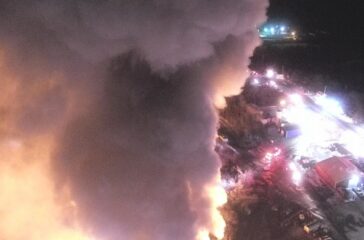Guest column: Protecting industrial workers from toxic chemicals
February started with news that’s all too familiar in the United States: An incident involving highly toxic industrial chemicals sparked a large fire, threatening an explosion, forcing evacuations, and putting workers and community members directly in harm’s way.
 EWG
EWG